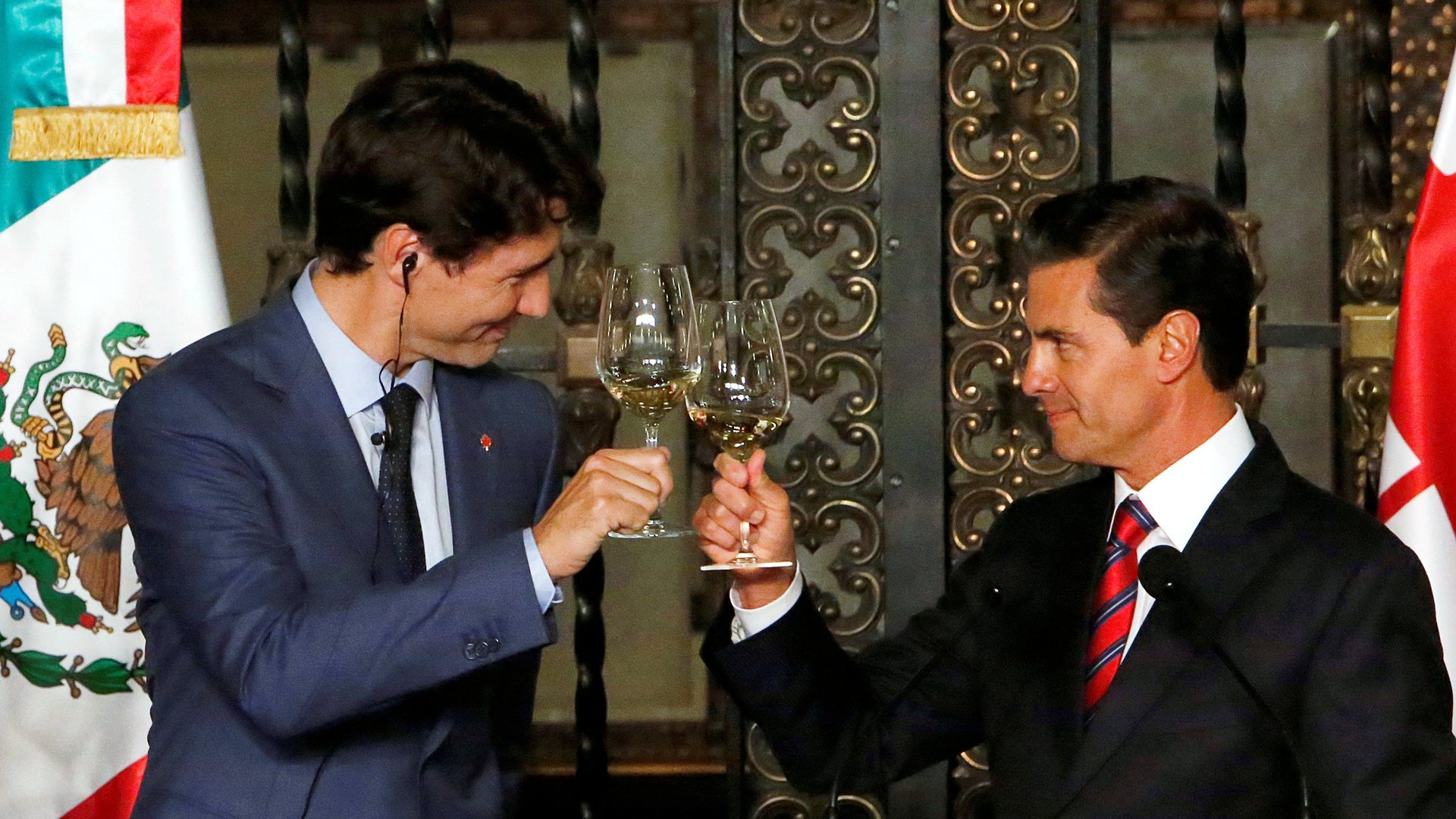Mexico and Canada just got more leverage in US trade negotiations
Eleven nations will formally enter into a new trade pact today designed to lower tariffs and bridge regulatory gaps around the Pacific rim, despite Donald Trump’s decision to pull the US out of the deal last year.


Eleven nations will formally enter into a new trade pact today designed to lower tariffs and bridge regulatory gaps around the Pacific rim, despite Donald Trump’s decision to pull the US out of the deal last year.
The deal, which we will call TPP-11 1, creates the third-largest trade zone in the world after the European Union and NAFTA, and creates more leverage for Mexico and Canada in trade negotiations with the US.
At the White House, who can say what trade policy will be announced? The president has suggested he will impose large tariffs on raw steel and aluminum imports, which increasingly look like a negotiating ploy. Anonymous staff members say the changes will be “symbolic,” and treasury secretary Steve Mnuchin has said Mexico and Canada could be exempt from the new tariffs in exchange for concessions in the renegotiation of free-trade pact NAFTA.
Mexico and Canada have not made those concessions, largely because the US requests focus on making trade less free. The two economies can hold firm because of developments like the new Pacific trade deal, which will create access to more purchasers of their goods and services. Canada has also signed a new trade deal with the EU, and Mexico will do the same this year.
“Mexico does have other options—they may not be ideal, but they’re options that weren’t available 25 years ago,” Antonio Ortiz-Mena, a former Mexican trade negotiator, told Foreign Policy.
That’s not to say that US market power doesn’t matter: The TPP-11 trade deal is still designed to allow the US to join whenever another president might be interested, and largely follows US law. But powerful US industries who pushed the Obama administration’s trade negotiators to put onerous extensions of copyright protection and extraordinary protection for drugmakers into the original deal may not have it so easy next time; those provisions were taken out of the TPP-11 agreement.
For now, Trump’s unrelenting focus on the trade deficit continues to baffle foreign partners and the US economic establishment, who recognize that the gap between imports and exports is not a simple measure of American competitiveness. The US economy and indeed the entire global commercial system is built not just on trade in goods and services, but the flows of capital back and forth between major economies. America’s status as a perpetual importer is in some ways a signal of its economic power, and Trump’s attempts to boost US growth with a massive tax cut will only grow the trade deficit.
And none of that includes another concern for negotiators and investors alike: That new US trade policies, once embarked upon, could be abandoned in a fit of pique.